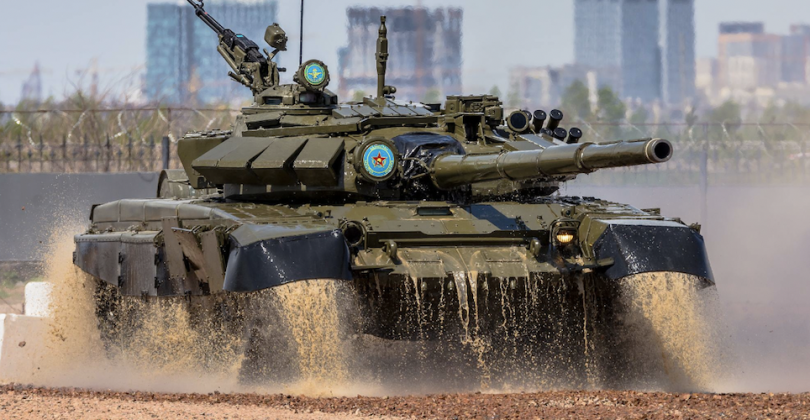As Ukrainian and Russian ground forces both show growing signs of strain on the frontlines, and amid reports that Russia is set to receive large shipments of new North Korean artillery and Iranian ballistic missiles, NATO member states are set to deliver a range of new armaments to bolster the Ukrainian Army. Although NATO’s supplies of tanks compatible with Ukraine’s Soviet inventory has quickly run thin, leading it to resort to deliveries of ageing T-55 tanks from Slovenia, the Pentagon has arranged for the delivery of 90 refurbished Soviet T-72B tanks from the Czech Republic upgraded with “advanced optics, communications and armour packages.” The only two Western tank classes in production, the American M1 Abrams and German Leopard 2, are both considered unlikely to be delivered for a number of reasons – most notably the risk that heavy losses in the theatre could serious compromise their reputations after both classes performed poorly in Iraq and Syria.

The T-72 was deployed in limited numbers by the Ukrainian Army before the war, with the backbone of its tank divisions formed by the more capable but higher maintenance T-64 tanks. Both classes use 125mm main guns and are compatible with the same ammunition types. The integration of T-72Bs into the Ukrainian Army is thus expected to be a straightforward process, with hundreds of T-72s of various models already having been delivered from Europe since February. Although both the T-64 and the T-72B are considered obsolete, in the kind of attrition warfare seen in Ukraine the sheer numbers fielded can still help to wear Russian forces down. Ukraine fielded the largest tank force in Europe before the outbreak of open hostilities with Russia in February, and its ground forces numbering in the millions are expected to easily be able to absorb more armour. Following the deliveries of some of NATO’s last Soviet compatible tanks, it is likely that there will be greater efforts by Western countries to seek to acquire such tanks from abroad – whether T-80s and T-55s from Pakistan or T-72s from Morocco.

Alongside T-72s Ukraine is set to receive U.S. built MIM-23 Hawk short range air defence systems from both Spain and from American reserve stockpiles. The Hawk system first entered service in 1960, and although old and long since retired by the U.S. Military modernised variants are fielded widely from Taiwan to Turkey. Russian forces have faced Hawk batteries before, with Turkey notably supplying them to Al Qaeda affiliated groups which operate in northwestern Syria under its protection. Although old, the Hawk will supplement Ukraine’s increasingly dense air defence network which has benefited from a tremendous inflow of NATO equipment ranging from Stinger handheld missiles to the modern but short ranged German Iris-T SLM. Ukraine is further set to receive 1100 Phoenix Ghost tactical drones, 40 armoured Riverine Boats, its first M1117 Armoured Security Vehicles, of which 250 will be delivered, and various secure communications and surveillance systems.

The Western Bloc’s tens of billions of dollars worth of military supplies to Ukraine since February has dwarfed that which Russia has itself received from North Korea and Iran, and complemented other kinds of support including access to NATO’s very extensive satellite assets and deployment of a ‘stealth network’ of CIA and other Western personnel to help organise the war effort. The New York Times thus reported in June: “a stealthy network of commandos and spies rushing to provide weapons, intelligence and training… C.I.A. personnel have continued to operate in the country secretly, mostly in the capital, Kiev, directing much of the massive amounts of intelligence the United States is sharing with Ukrainian forces…. Commandos from other NATO countries, including Britain, France, Canada and Lithuania, also have been working inside Ukraine… training and advising Ukrainian troops and providing an on-the-ground conduit for weapons and other aid.” It emphasised the sheer “scale of the secretive effort to assist Ukraine that is underway.” Military contractors from Western countries, and Poland in particular, have also shouldered much of the burden of fighting on the ground, while volunteers from across the Western world have also been sent to the front and taken significant casualties. As Russian and Ukrainian forces show growing signs of strain, it remains uncertain whether the massive inflow of NATO weaponry and other kinds of support will be able to tilt the balance and ensure that the former breaks before the latter.
